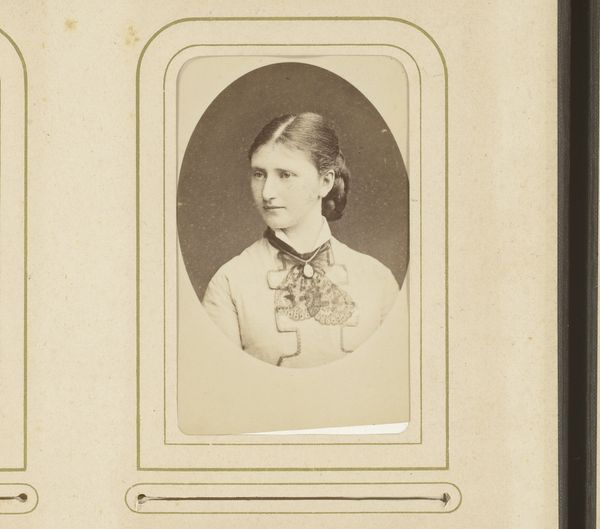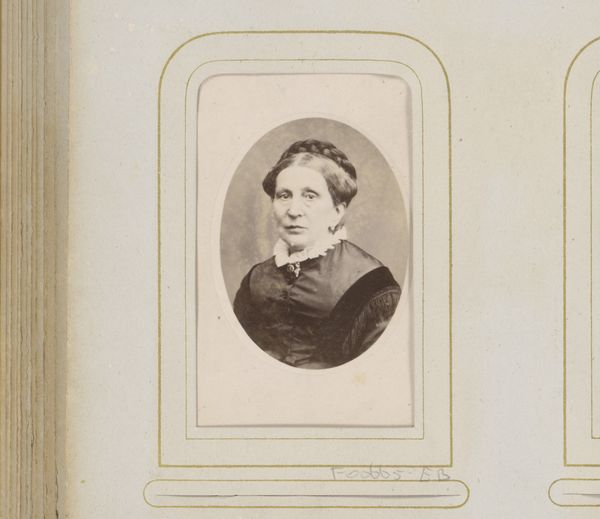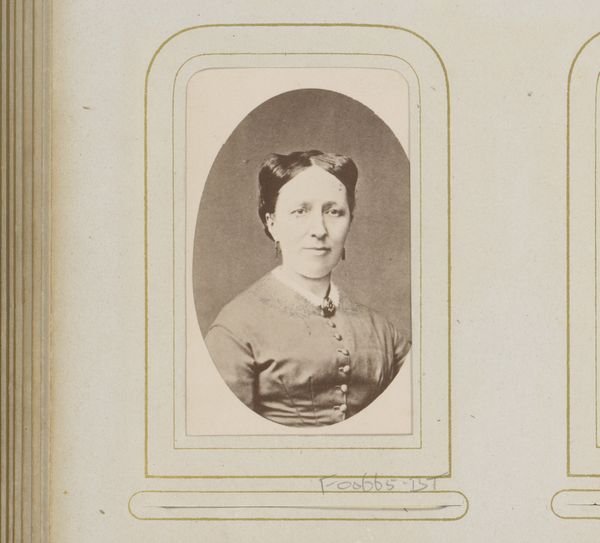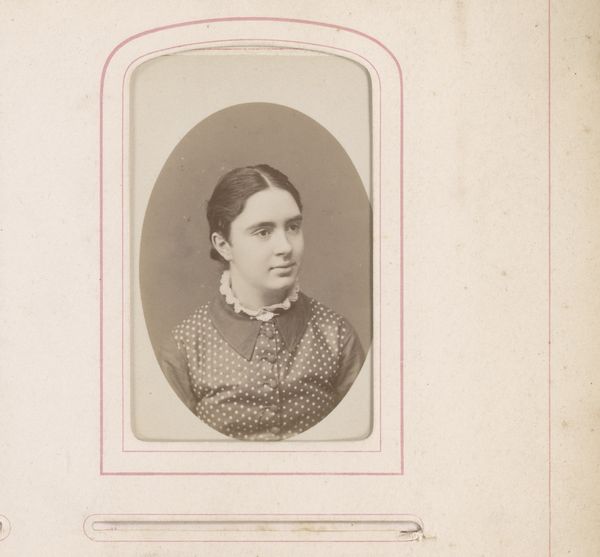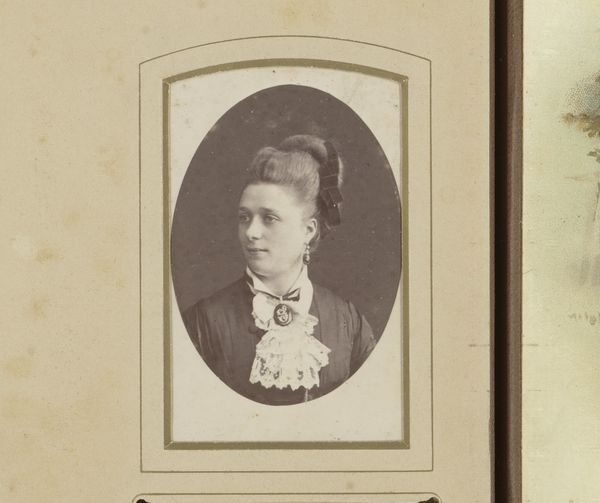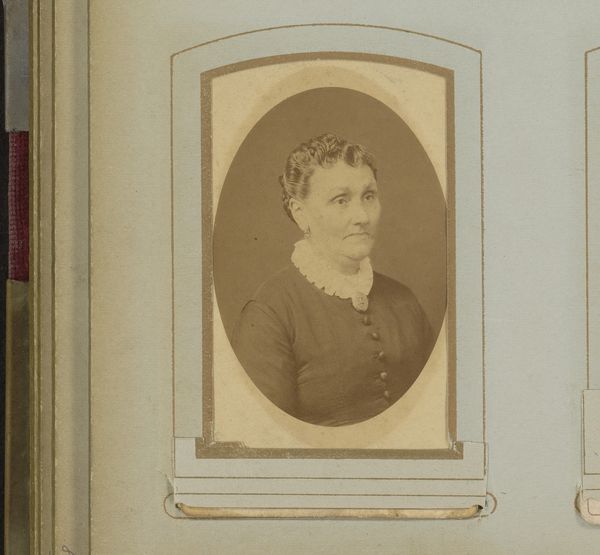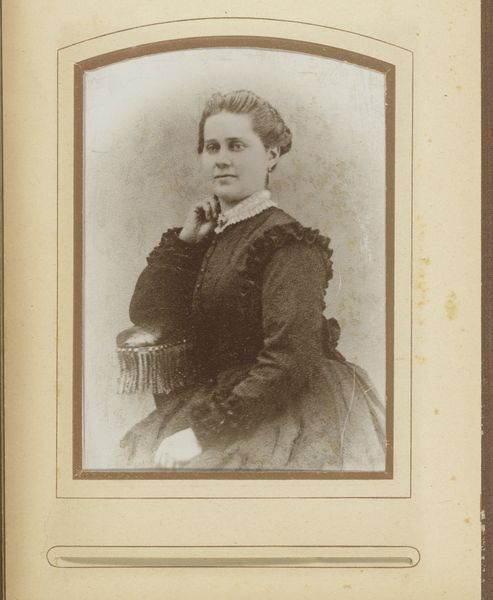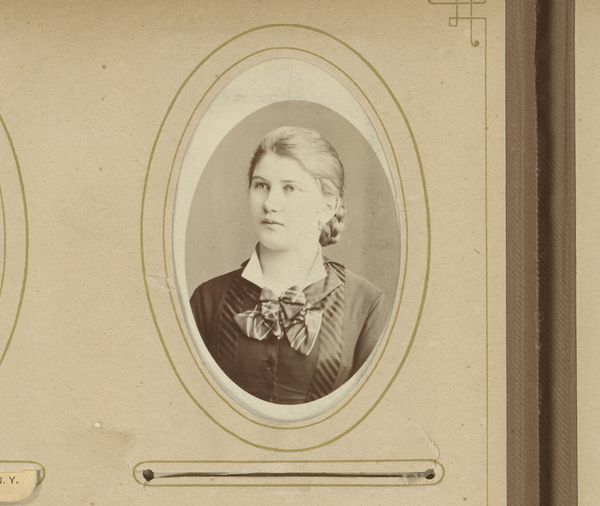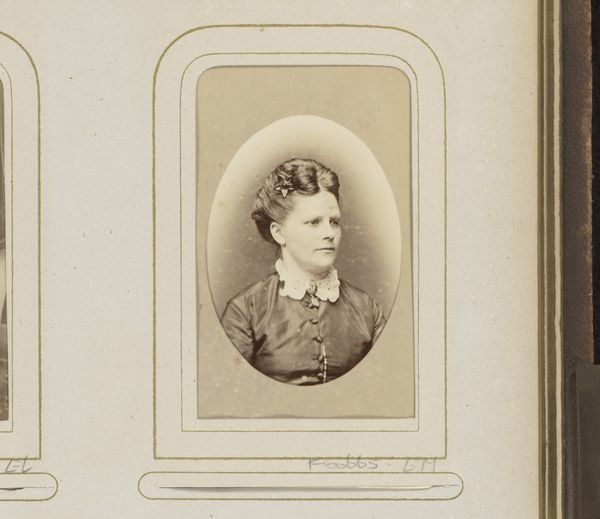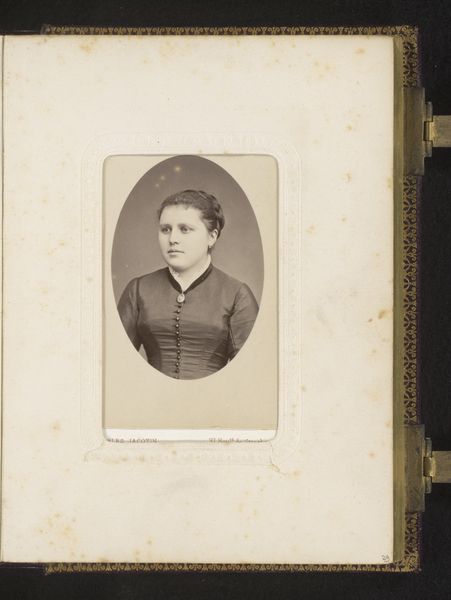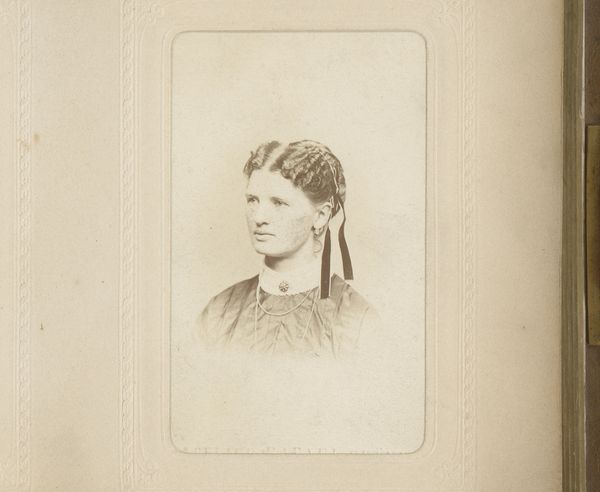
photography, albumen-print
#
portrait
#
photography
#
historical photography
#
19th century
#
albumen-print
#
realism
Dimensions: height 85 mm, width 52 mm
Copyright: Rijks Museum: Open Domain
Editor: So, here we have "Portret van een vrouw," taken sometime between 1875 and 1899 by Egide Linnig, made with the albumen print process. Looking at her face, it feels very... grounded. What catches your eye in this portrait? Curator: The light, definitely. It’s caught and diffused by the paper itself. This "groundedness" you perceive, is she present or just recorded, a ghost in a box, you know? This isn’t just about documenting a face, is it? Think of her story—trapped inside the emulsion of a photo that became an art object. The portrait isn't candid, someone said cheese. The artist had to know how to bring forth this stillness through a bulky process with many constraints. What story can we write that’s more powerful than hers? Editor: The light is striking when you point it out. Is that stillness something many portraits in this period go for? Curator: To afford a portrait in those times! That meant something. This photograph isn't an aesthetic statement like Manet’s Olympia. Its realism stems from its accessibility—a family capturing an image of a relative using developing techniques of photography with whatever money they could spare! Stillness allows an artist a clarity that would take several works, across countless genres for some artists to achieve. Editor: Thinking about the family connection really does shift how I see the piece, that quietness now reads like reverence. Curator: Precisely! We all have our own photos hiding in our attics. Photos passed between the generations are visual and genetic links to the past. It humanizes the subject while, also immortalizing their visage into paper! The eyes will fade, sure, but what else will be passed along with that worn picture?
Comments
No comments
Be the first to comment and join the conversation on the ultimate creative platform.

